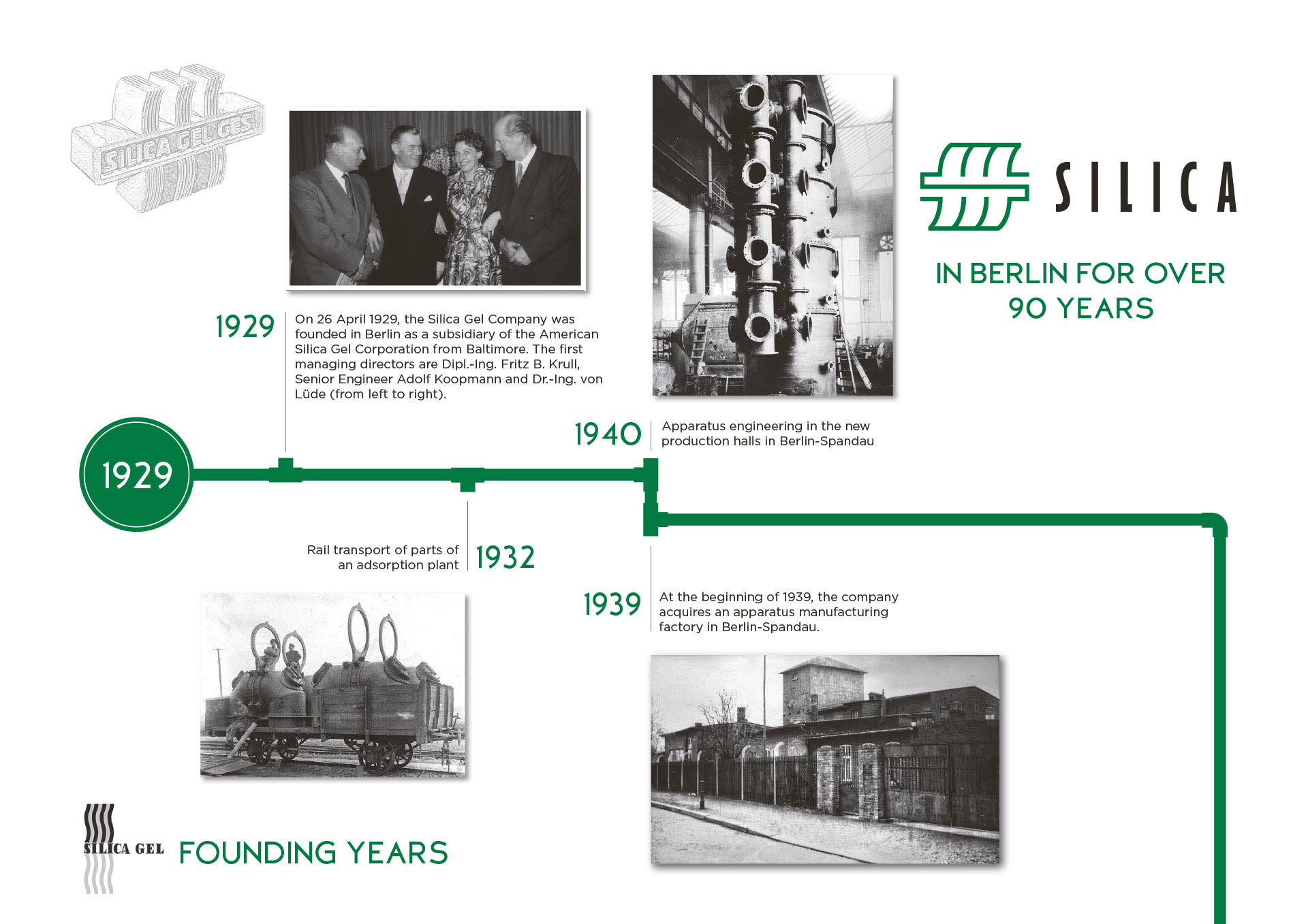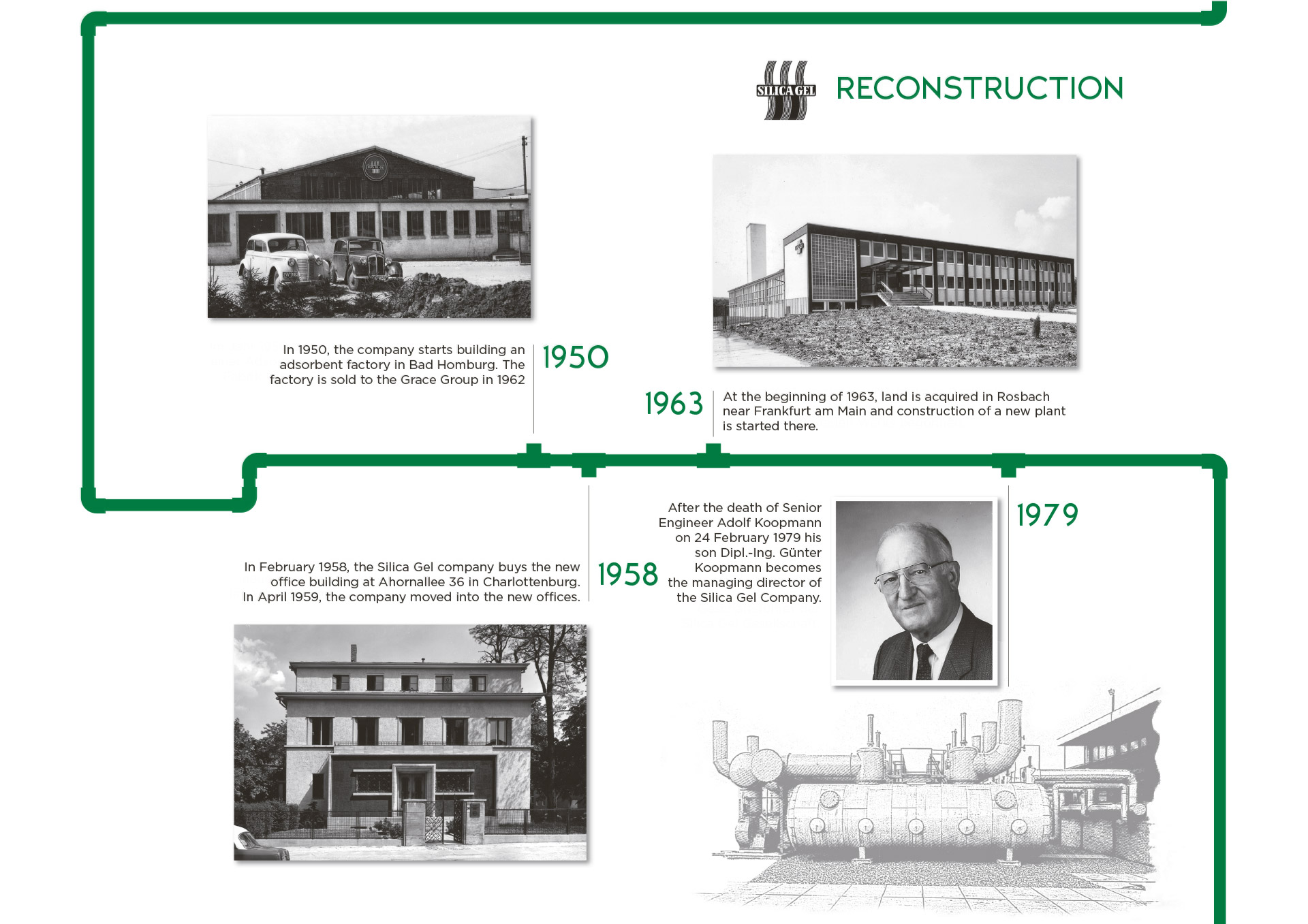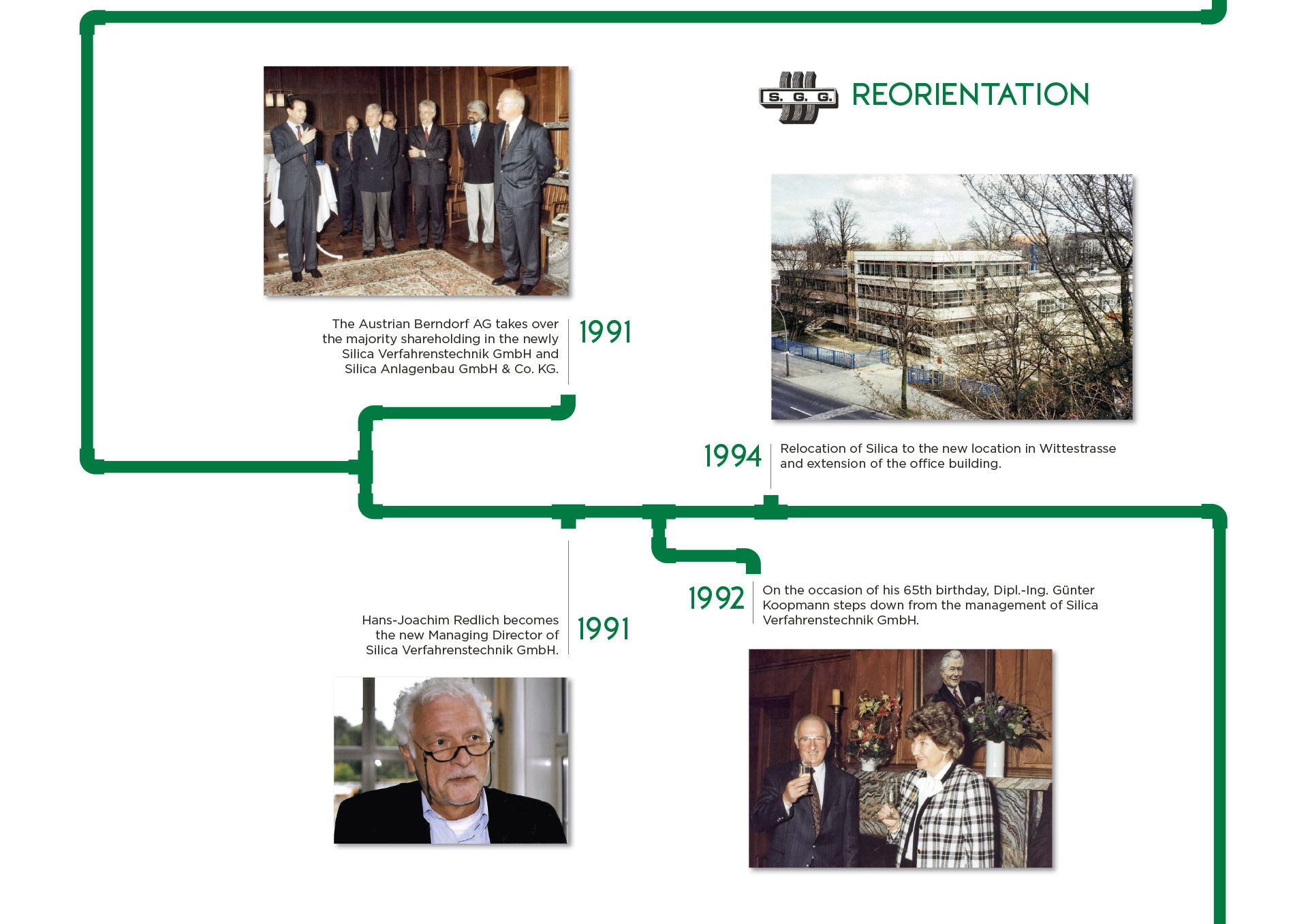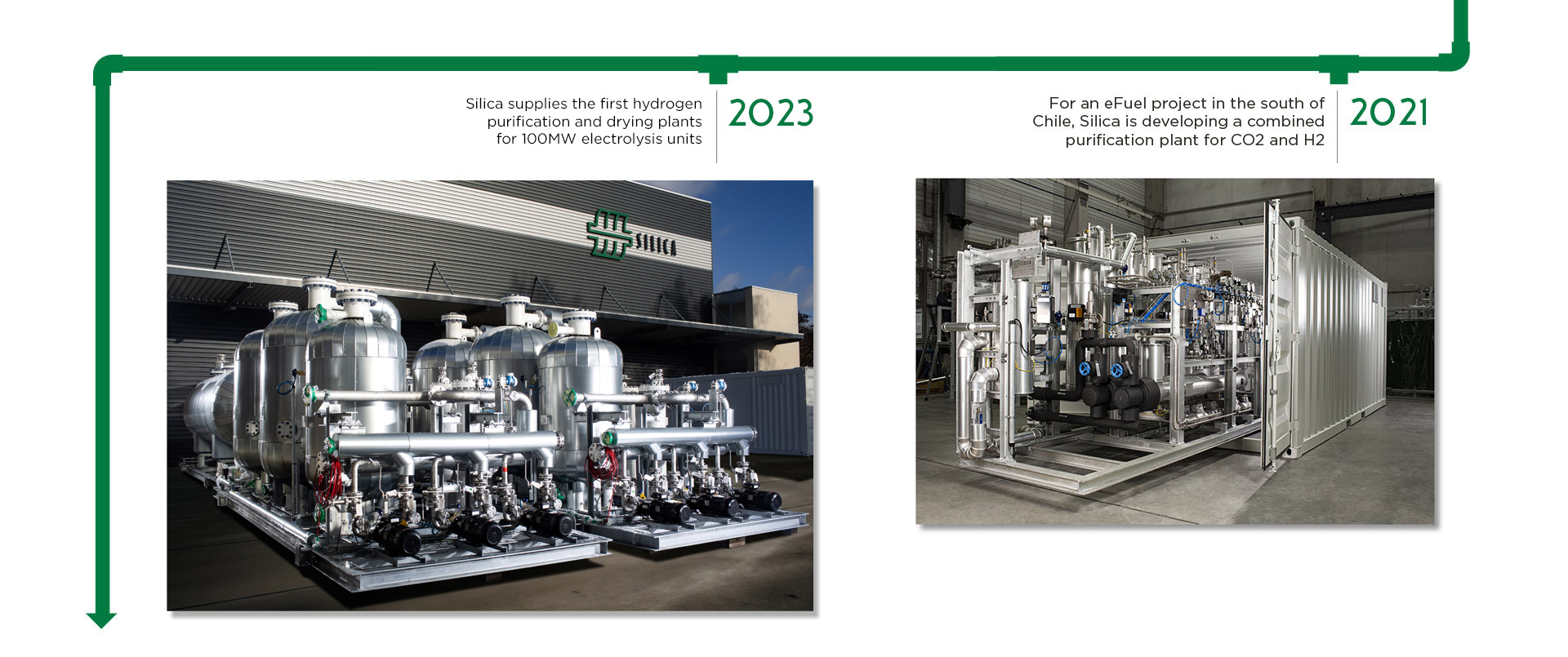Experience, tradition, innovation

IN BERLIN FOR OVER 90 YEARS
Experience, tradition, innovation

IN BERLIN FOR OVER 90 YEARS





90 YEARS SILICA: A SUCCESS STORY
Founding years: From crisis to success
Berlin, 1929: The city has more than four million inhabitants, the population is growing rapidly. Around 82,000 motor vehicles are registered in Berlin. Tempelhof Airport develops into the most modern air hub in Europe and records more than 20,800 landings that year. The city is a melting pot of culture, economic boom and political conflict in the final years of the Weimar Republic. Berlin is emblematic of the Roaring Twenties between the end of inflation and the beginning of the Great Depression.
Berlin is caught up in the Great Depression. In February 1929, 450,000 people are unemployed and there are 664 bankruptcies in the city. In this environment it is decided on 26 April 1929 to found SILICA Gel Gesellschaft m.b.H., which is entered in the commercial register on 6 May 1929. The sole shareholder is the US SILICA Gel Corporation with a capital of 300,000 Reichsmarks. The SILICA Gel Gesellschaft further develops the adsorption plants designed by the Borsig company and sells solvent recovery plants for the artificial leather and hard paper industry.
Takeover by German management
Due to the ongoing world economic crisis, the US SILICA Gel Corporation sells its shares to the engineers Adolf Koopmann, Fritz Krull and Dr. Kurt von Lüde in 1935. With this purchase, the process documents and patents for the production of the desiccant Silica Gel also pass into the possession of the new company. In the following years, the production of Silica Gel is expanded at the Chemische Werke Coswig (Saxony-Anhalt). In 1936, the company moves into larger premises on Reichskanzlerplatz in Berlin (today‘s Theodor-Heuss-Platz), and the design department and physical laboratory are expanded. At the beginning of 1939, the company acquires a factory in Berlin-Spandau and begins manufacturing its own apparatus and equipment.
RECONSTRUCTION
After the end of the Second World War, the authorities confiscate the business premises at Reichskanzlerplatz. Nevertheless, the company is re-registered as a going concern on 10 May 1945 and resumes business operations in the remaining premises. In the following years, SILICA signs several contracts to rebuild the solvent recovery plants dismantled by the Allies. The foundation stone for the reconstruction of SILICA Gel Gesellschaft is laid!
By the time of the currency reform in 1948, the company has regained its full freedom of movement. In addition to the necessary premises and machinery, it also had sufficient working capital. As the expropriation of the SILICA Gel factory in Coswig is imminent, construction of a new adsorbent factory in Bad Homburg begins in 1950, which is continually expanded over the next few years. At the end of 1956, Fritz Krull leaves the company as a co-partner due to a serious illness.
Sale to the US company Grace
From 1962 onwards, the US company Grace proves to be a strong competitor for the production of Silica gel. As a consequence, the SILICA company management decides to sell the factory in Bad Homburg and conclude a supply contract with Grace. The proceeds from the sale are used to finance the construction of a new factory in Rosbach, Hessia. Dr. Kurt von Lüde takes over the management of the new factory, but leaves the company at the end of 1965 due to illness. Adolf Koopmann is now the sole owner of the company.
Due to the very positive development of orders, the plant in Berlin-Spandau is further expanded in 1966 and the company grows continuously. After the sale of the Silica gel production, the SILICA Gel Gesellschaft now concentrates on the design and construction of plants for gas purification and solvent recovery. With great success: in 1978 a new heavy construction hall is built at the Spandau plant. After the death of Adolf Koopmann on 24 February 1979, his son Günter takes over the management of SILICA Gel Gesellschaft.
With a firm hand he leads SILICA through sometimes stormy times: Due to the cancellation of economic subsidies for West Berlin after the fall of the Wall, SILICA faces great challenges at the beginning of the nineties. In addition, the reunification brings a large number of East German equipment and plant manufacturers onto the new all-German market with extremely favourable offers.
Reorientation
In 1990/91, Günter Koopmann takes the decisive step towards further developing the company and securing its future. The Austrian Berndorf AG holding decides to take over the majority stake at SILICA Verfahrenstechnik GmbH and SILICA Anlagenbau GmbH & Co. KG. On the occasion of his 65th birthday in 1992, Günter Koopmann steps down from the management of SILICA and serves the company on the advisory board in the following years.
In 1991, Hans-Joachim Redlich takes over the management of the company and leaves a lasting mark on SILICA. Three years later, the company moves to its present location at Wittestrasse 24; the existing office building is enlarged by an extension. With plants for natural gas conditioning, SILICA succeeds in entering the field of large-scale plant construction with individual orders of up to 22 million euros. Part of the income generated is invested in the expansion of production capacities: In November 2015, a new assembly hall is inaugurated at the SILICA site in Wittestrasse, which, with its height of 14 meters, enables the indoor assembly of larger plants regardless of the weather.
Outlook for the future
Following the retirement of Hans-Joachim Redlich in 2014, the company is once again facing changes: The gradual transformation of the economy from fossil to renewable energy sources brings many challenges for SILICA, but also great opportunities. Hydrogen produced from regenerative energies will establish itself as an industrial energy carrier in the next few years. Already today, smaller quantities of hydrogen produced from natural gas are being replaced by „green“ hydrogen.
SILICA‘s purification and drying technology is represented in the electrolysis plants of well-known manufacturers. Together with our partner in Barcelona, we offer small, decentralised natural gas liquefaction plants to convert energy production from coal and diesel to the more environmentally friendly liquefied gas in Southeast Asia and South America. In addition, we will return to our old strengths and in the future will be significantly more active in the area of cleaning and recovering valuable materials from waste gas streams with new technologies in order to conserve valuable resources.
Your contact to SILICA
SILICA: INDIVIDUAL, COMPETENT, RELIABLE
We treat every request confidentially and conscientiously. We want you to be
completely satisfied with our work!
